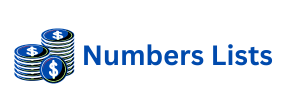Content Writing: Mastering Semantic SEO for Digital Success
Content writing forms the backbone of digital marketing. It powers online presence for businesses. High-quality content attracts and engages target audiences. It also establishes brand authority. In today’s competitive landscape, effective content is more crucial than ever. It drives organic traffic consistently.
Semantic SEO has transformed content strategy. It moves beyond simple keyword matching. This approach focuses on user intent and related topics. Semantic content provides comprehensive answers. It covers a broad range of relevant entities. This deep understanding satisfies complex user queries. It helps search engines grasp content meaning better.
A strong content strategy blends creativity with data. It targets specific audience needs. It aligns with search engine algorithms. This balanced approach yields significant results. It improves visibility and drives conversions. Businesses must adapt to these evolving demands. They need to create truly valuable content.
Every piece of content serves a purpose. It could educate, entertain, or persuade. Understanding this goal is vital. It shapes the writing process entirely. From blog posts to landing pages, each requires careful planning. Precision in execution ensures maximum impact. This holistic view elevates content effectiveness.
Strategic Keyword Use in Semantic SEO Content
Keyword research remains foundational. However, its application has matured significantly. Semantic SEO demands a deeper dive. It requires understanding query intent. What is the user truly searching for? This question guides keyword selection. It helps uncover related phrases and concepts.
Long-tail keywords are increasingly important. They reflect specific user needs. These phrases often have less competition. They also drive higher conversion rates. Including them naturally enriches content. It expands its reach to niche audiences. This strategic inclusion improves relevance greatly.
Entities are core to semantic understanding. These are real-world objects, concepts, or people. Content should identify and connect relevant entities. For example, a “Keyword:” search might relate to various analytical tools. It could also involve different research methodologies. Mapping these connections creates richer content.
Google’s Knowledge Graph relies on entities. It understands relationships between them. By using relevant entities, content signals its depth. It shows comprehensive coverage of a topic. This helps search engines rank content higher. It confirms the content’s authority in its domain.
Tools for keyword research have evolved. They now offer more semantic insights. These tools help uncover related terms. They suggest questions users ask. Utilizing them effectively refines content strategy. It ensures comprehensive topic coverage. This results in content that truly resonates.
Boosting Authority with External Backlinks in Content Writing
Content writing does not exist in isolation. It connects to the broader web. Thoughtful use of external links is crucial. These links point to other authoritative websites. They provide additional context and credibility. They signal thorough research to readers.
Linking to high-quality sources enhances trust. It shows commitment to accuracy. For instance, linking to a reputable study strengthens claims. It provides evidence for assertions. This practice is beneficial for readers. It also positively influences search engine rankings. Search engines value well-referenced content.
An External Backlink acts as a vote of confidence. It directs users to more information. This improves the overall user experience. It keeps content fresh and dynamic. It shows that your content is part of a larger conversation. This interconnectedness boosts your page’s perceived authority.
However, quality over quantity is key. Link only to truly valuable resources. Irrelevant or low-quality links can harm credibility. Choose sources that align with your content’s message. Ensure they are up-to-date and reliable. This selective approach maximizes the benefit. It reinforces your content’s standing.
Strategic external linking is a subtle art. It balances reader value with SEO benefits. Integrating these links naturally is important. They should not feel forced or out of place. They must serve a clear purpose. This thoughtful placement improves both UX and search performance.
Developing High-Quality Content for User Engagement
Engaging content holds reader attention. It encourages longer dwell times. This signals quality to search engines. Clear, concise writing is paramount. Avoid jargon where possible. Explain complex concepts simply. Use an active voice for stronger impact.
Content structure plays a vital role. Use headings, subheadings, and bullet points. These elements break up text. They make it easier to read. Logical flow guides the reader through information. This structure improves readability immensely. It helps users quickly find answers.
Storytelling can captivate audiences. It makes content more memorable. Relatable anecdotes resonate deeply. They build an emotional connection. This human element sets content apart. It transforms information into an experience. Authentic voice also contributes to engagement.
Visual elements support textual content. Images, videos, and infographics enhance understanding. They break monotony and add appeal. While not directly part of this text, their importance is noted. High-quality visuals complement great writing. They boost overall content effectiveness greatly.
Proofreading is the final, crucial step. Errors undermine credibility quickly. Flawless grammar and spelling are expected. They reflect professionalism and attention to detail. A polished piece of content commands respect. It reinforces the authority of the writer and brand. This meticulous review is essential.
Continuous Optimization for Content Writing Impact
Content writing is an ongoing process. It does not end after publication. Monitoring performance is essential. Track key metrics like traffic and engagement. Analyze bounce rates and conversion goals. This data provides invaluable insights.
Regular content audits are beneficial. Identify underperforming articles. Update outdated information promptly. Refreshing existing content can boost rankings. It improves relevance for current searches. This proactive approach sustains content value. It ensures continued success for your strategy.
Experiment with different content formats. Test new topics and angles. Observe what resonates most with your audience. This iterative process refines your strategy. It keeps your content fresh and impactful. Adaptation is key in the dynamic digital world.
Feedback from readers is a goldmine. Pay attention to comments and questions. Address their needs in future content. Building a community around your content strengthens loyalty. It creates a valuable resource for everyone. This continuous loop of improvement drives growth.
